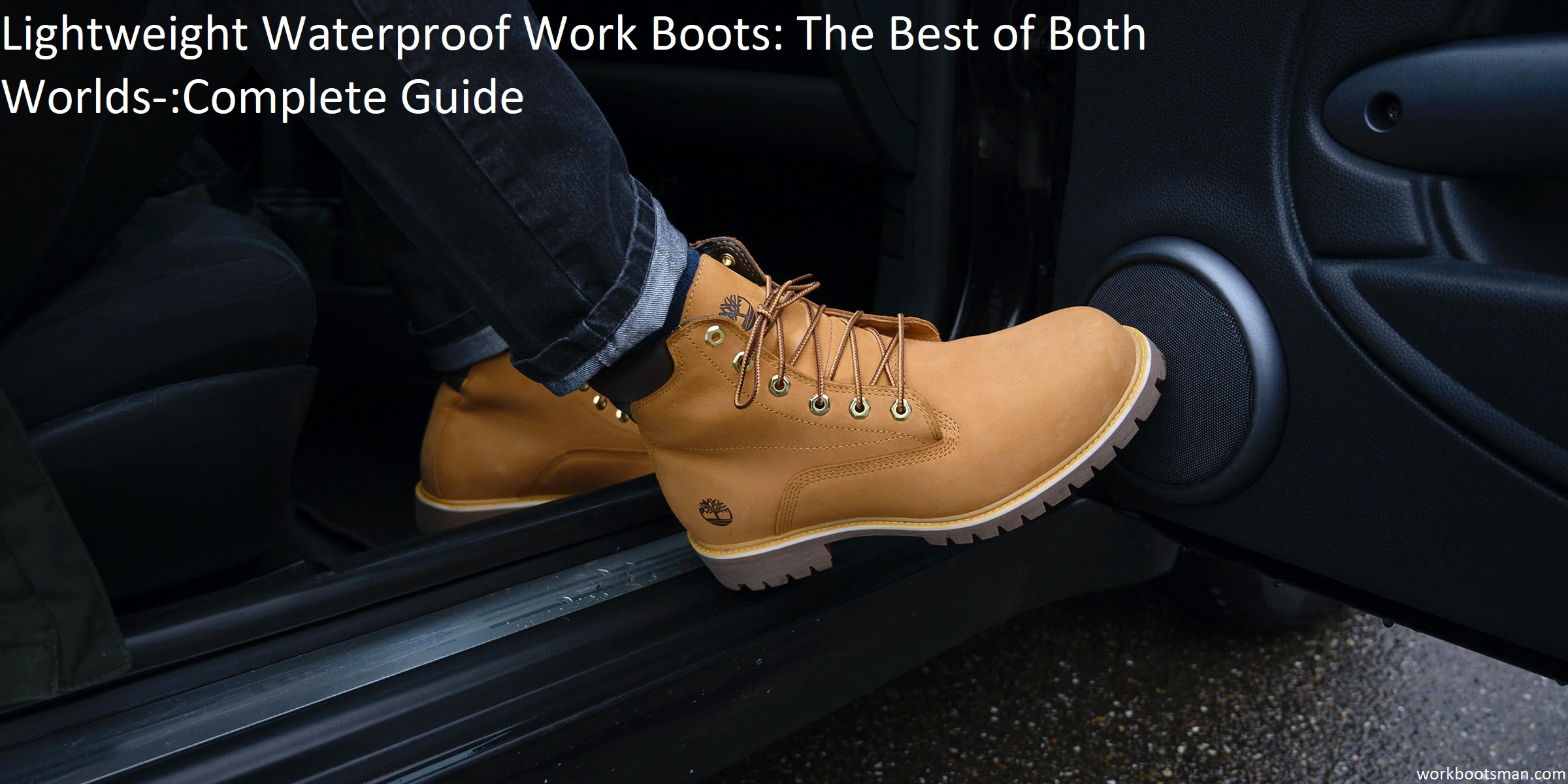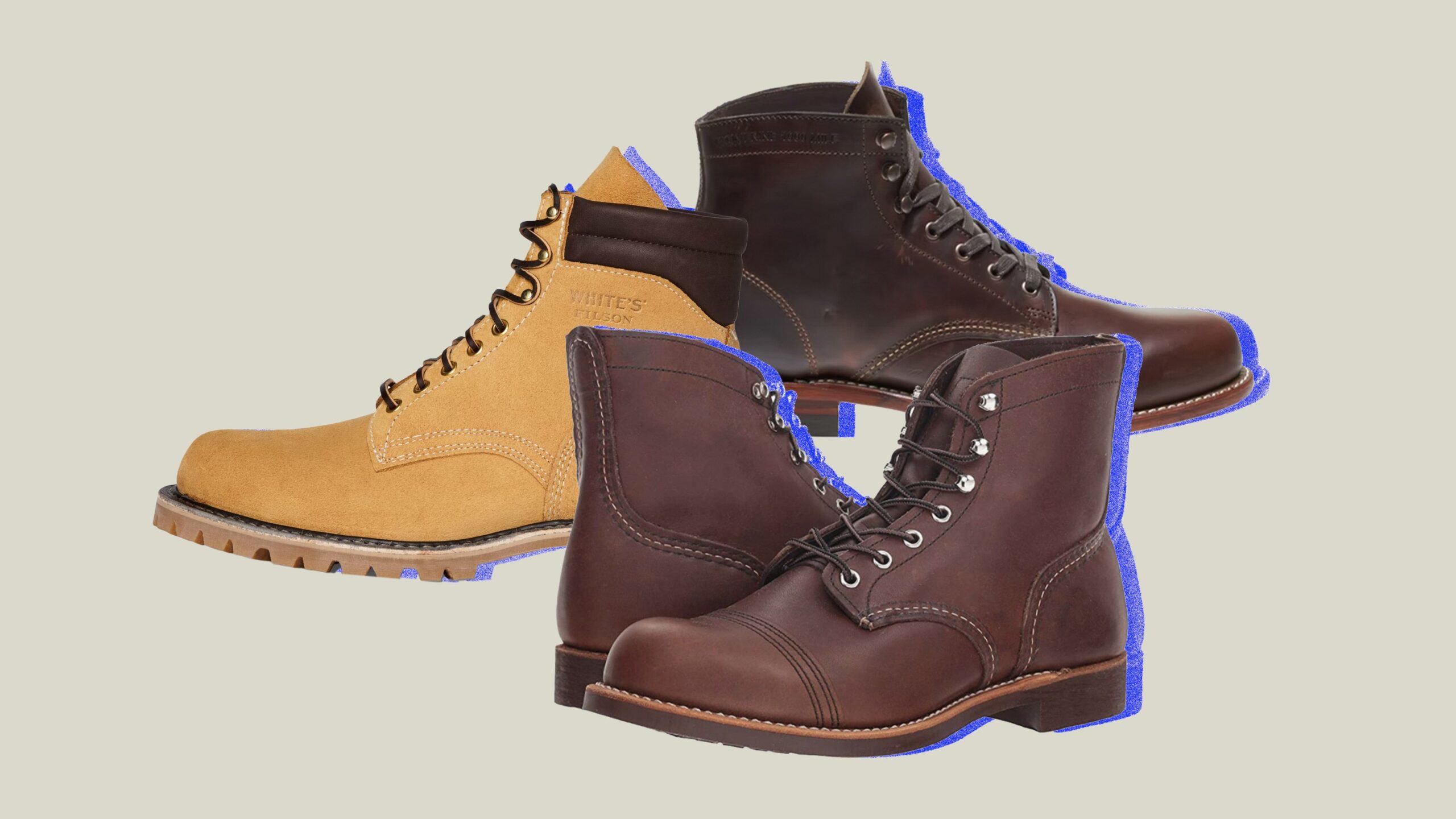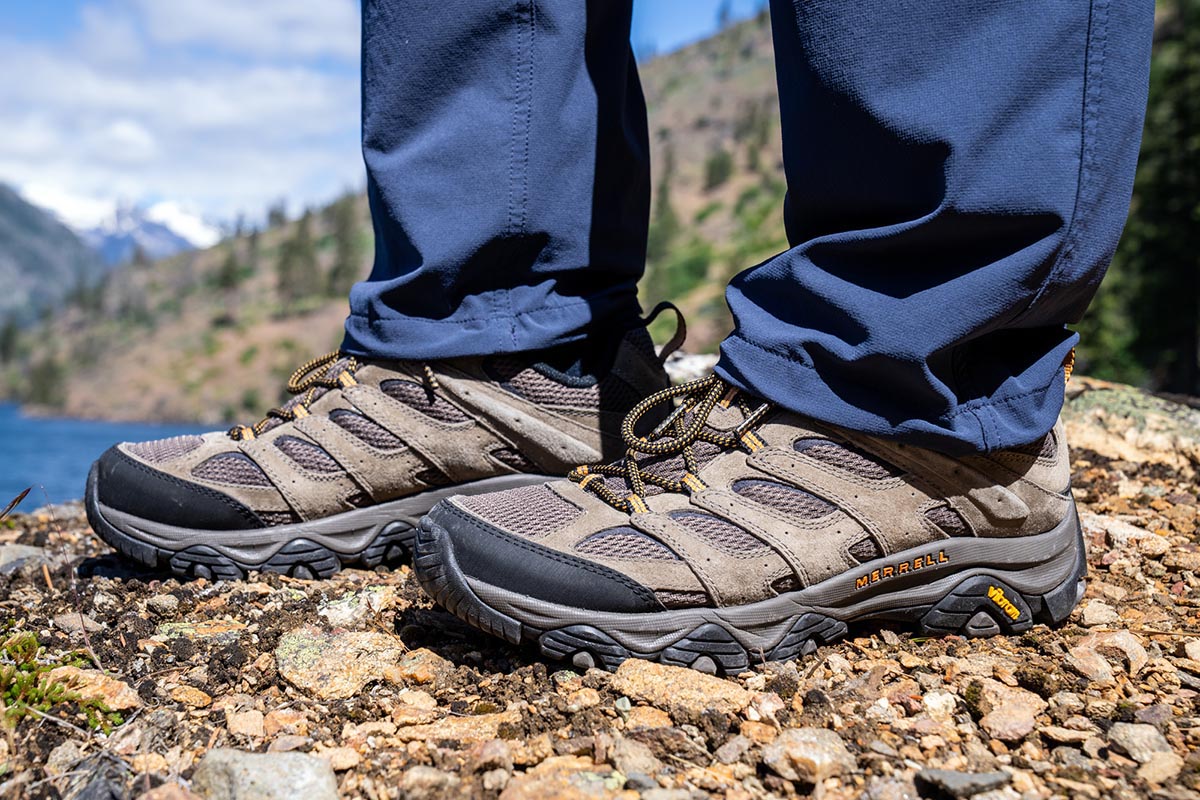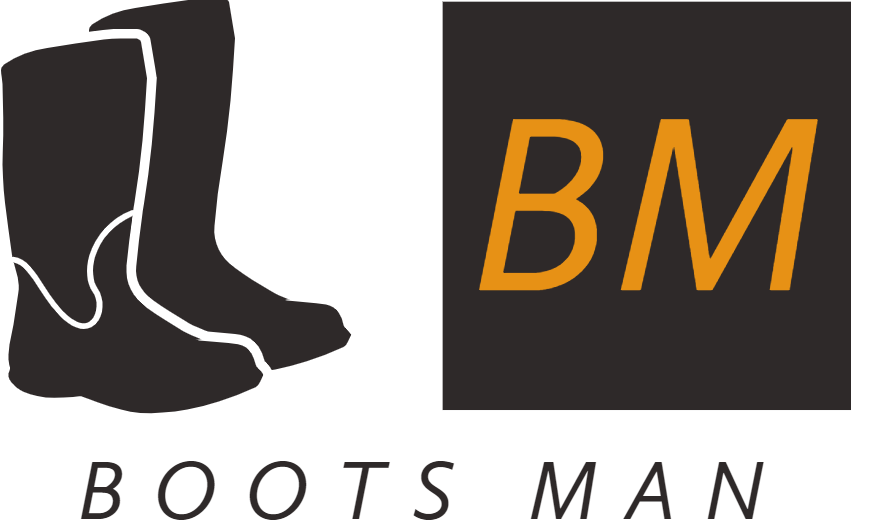Are you looking for the perfect pair of work boots? Search no further! Our guide to the best lightweight waterproof work boots will help you stay safe, comfortable, and dry all day long.
You’ll find that with exceptional traction and waterproofing, these boots provide the perfect balance between functionality and style. So start your journey now!
Lightweight waterproof work boots, commonly referred to as LWPs, offer a balanced combination of features that make them an excellent choice for people who want a sturdy and comfortable pair of shoes to wear during the winter months or when camping in wet weather.
These boots feature a waterproof outer layer that is designed to keep your feet warm and dry even in extreme conditions, while the lightweight stature makes them easy to carry and transport with you wherever you need to go. LWPs also have great arch support and cushioning on the sole, making them ideal for those who work outside in hard weather conditions.
This guide will provide an overview of why these boots are so popular, what features they offer, how they can be used safely and the different types available.

Explanation of the importance of work boots
Performance and safety in the workplace require the use of durable and protective footwear. Work boots fulfill these needs by providing strategic protection that is uniquely designed for different industries. A sturdy design, supportive and firmly padded collar, slip-resistant outer sole, comfortable interior fit and waterproof qualities are all key factors when it comes to choosing the best work boots for a specific job. Safety features should include antifatigue technology or anti-puncture features depending on the hazards of the work environment.
Lightweight waterproof work boots provide workers with enhanced comfort while still offering complete protection and safety. There are several benefits to choosing lightweight options over heavier styles of work boots, such as improved energy efficiency during long shifts, increased mobility when climbing ladders or stairs, and reduced pressure on feet, ankles and knees. Additionally, waterproof properties offer superior protection against elements like liquids or chemicals that might come into contact with employees’ feet in certain industries. Lightweight waterproof work boots provide a viable solution between protecting employees’ feet from potential hazards without sacrificing comfort levels during long hours on the job site.
Advantages of lightweight waterproof work boots
Lightweight waterproof work boots combine lightness and waterproofing who require comfort, safety and durability whilst working in wet or cold environments. They are designed to protect your feet from the elements while keeping them comfortable. The lightweight material makes them easy to wear and they are also highly flexible. The waterproofing ensures your feet stay dry even in wet weather. The added benefit of being breathable helps to keep your feet free from sweat.
Some of these work boots also provide insulation which helps to keep your feet warm and ready for whatever job you might encounter in cold or wet conditions. These insulated lightweight boots offer the perfect combination of safety, comfort and protection for any working environment.
Overview of the article
This comprehensive guide examines the various lightweight waterproof work boots available on the market. We’ll begin by discussing the different types of boots and materials used.
In addition, we’ll cover the key features to look out for when buying a pair, such as ankle protection, durability, breathability and waterproofing.
Finally, we’ll provide some tips to help you make an informed decision when it comes to selecting a pair of lightweight waterproof work boots.
Factors to Consider when Choosing Lightweight Waterproof Work Boots

There are several factors to consider when purchasing a pair of lightweight waterproof work boots. First, consider the type of application for which you need the boots. Different types of activities and environments require different features on the boot, such as slip resistant soles and oil-resistant outsoles, so be sure to review all your options before making a purchase.
You’ll also want to look at overall comfort factors such as insoles, cushioning and arch support as well as fit. It’s important that your shoes fit properly — if they’re too small or too big, this could cause issues with your gait or blisters on your feet.
In addition, make sure to check for breathability within the boot itself. A waterproof boot needs to be breathable in order to provide effective cooling when you’re working in warmer weather conditions─ a good combination of leather and mesh will help you stay comfortable while still providing protection against moisture seeping into the interior of the boot. Finally, don’t forget about style─look for a design that is comfortable yet looks professional enough for any job site or industrial location.
Material
Waterproof work boots are designed to keep your feet dry and protected no matter the job. When looking for a pair of waterproof boots, it is important to know the type of material that will best serve your individual needs. While there are various materials that are both breathable and waterproof, there are also more lightweight materials on the market, though they may have a shorter lifespan than other materials.
The following materials can be used in waterproof work boots to make them lighter and more comfortable:
-Nylon/Synthetic/Polyurethane: This synthetic material is both waterproof and lightweight. It provides good abrasion resistance, breathability, and flexibility. However, it wears out relatively quickly when compared to othermaterials.
-Gore-Tex: This material combines different layers that create a membrane with tiny pores between them; these pores act as restrictions for larger water molecules so they can’t enter into the boot while still allowing vapors from perspiration out of the boot. The membrane also resists abrasion from debris and offers long-term durability due to its construction.
-Neoprene: Used in rubber boots this material provides superior flexibility with little added weight; however, it does not breathe easily as air cannot flow freely through it like some of these other lightweight materials so be sure to check your conditions thoroughly before selecting this option. Additionally, neoprene is prone to damage from petroleum products which may be an issue depending on your job requirements or usage conditions.
Comfort and Fit
When it comes to comfortable and long-lasting waterproof work boots, there are a few key features to look for.
First, the boot should fit your foot both in terms of width and in terms of length. Some manufacturers offer shoes that come in different widths, while others feature varying sizes of the same shoe model or different sole materials or patterns.
Secondly, consider the overall comfort level; waterproof work boots can be heavy and thick so make sure the inner sole provides sufficient cushioning and arch support. Additionally, make sure that any seams or stitching are not rubbing against your feet and that laces do not dig into your skin when you tighten them up.
Finally, your chosen pair should have an interior mesh lining for breathability so that water does not accumulate in between seams.
Safety Features

When shopping for lightweight waterproof work boots, safety features are as important as comfort, quality, and durability. The best work boots provide a secure fit, with good arch support. Look for steel toes instead of composite toes to ensure maximum protection against job-related risks such as debris and other obstacles. For extra protection, look for boots with waterproof membranes that guard against water penetration. Also make sure the soles are slip-resistant and provide good grip, which is essential when you’re working on slippery surfaces or uneven terrain. Finally, opt for air-cushioned heels to absorb impact when walking or standing all day long.
By investing into the right safety features you not only minimize workplace hazards but also ensure optimum performance on the job.
Maintenance and Care for Lightweight Waterproof Work Boots
Lightweight waterproof work boots can be fantastic additions to any wardrobe, but with some types of shoes, maintenance and care have to be taken into consideration more than with others. Here are a few ways that you can care for your boots and make sure they last as long as possible.
The first and most important tip is to never store your boots in direct sunlight or near a heat source. This will cause them to dry out, crack, and potentially break down. Instead, store them in a cool and dry place that is away from other fabrics or objects so that they don’t rub together uncomfortably and become scuffed or scraped during their lifetime.
It is also important to waterproof your shoes periodically, especially if they are used outdoors frequently. Investing in a high-quality waterproofing solution and investing in regular maintenance will ensure longer lasting footwear protection from the elements. Additionally, cleaning and wiping down your shoes after each use will help prevent odors from forming due to sweat buildup or other dirt particles. As well as this periodic washing will keep the leather looking perfect for longer periods of time!
Finally, Comfort should be your main concern when wearing lightweight work boots – inspect the laces often for fraying or stretching so that there aren’t any uncomfortable slipping issues while walking. Also make sure you are familiar with the terrain you plan on traversing with these types of boots since this type of shoe may not be ideal for certain terrains such as rocky quicksand or various muds/clays where it could lead to slipping issues/injury!
Cleaning and Drying
Work boots that are both lightweight and waterproof are becoming increasingly popular as they ensure maximum practicality while keeping the wearer comfortable. Careful cleaning and drying techniques are necessary to maintain the durability of these boots. Here, we provide a step-by-step guide on how to properly clean and dry your lightweight waterproof work boots.
Step 1: Remove all dirt, mud, or other debris from the outside of the boot with a stiff brush and lukewarm water. Alternatively, tighten laces, put the boot into a mesh bag, and throw it in your washing machine on the gentle cycle with cold water. Afterward, hang or air dry away from direct heat.
Step 2: Treat any stains or discolorations with rubbing alcohol or a cleaner formulated specifically for leather shoes before wiping off with a damp cloth. Be sure to address any grime around seams or creases as this can cause skin irritations.
Step 3: To refresh shoe insoles, remove them one by one and spot clean them with warm water and mild detergent before air drying thoroughly in an area protected from sunlight such as a closet floor or shelf. Discard any heavily soiled insoles that cannot be fully cleaned without damaging them and purchase replacements if needed.
Step 4: Use specialized shoe treatments like wax spray for additional protection against water penetration after allowing each treated layer to harden first before application of another layer of wax spray (repeat three times total). This ensures that your boots remain waterproof for extended periods of time in rain and snow conditions without compromising breathability.
Condition and Protect

To ensure your work boots will last for a long period of time, it is important to condition and protect them regularly. Although many waterproof work boots are designed specifically to protect your feet from water and mud, regular conditioning is still an integral part of good boot care. Leather boots require special conditioning to remain soft and flexible without cracking due to extreme weather conditions. Here are some tips for keeping your waterproof work boots in optimum condition:
- Clean the leather with a damp cloth and saddle soap or leather cleaner immediately after use by gently wiping off any dirt or mud, followed by drying the boot with a soft cloth.
- Apply a light leather conditioner or moisturizing cream with a soft cloth or brush once the surface is clean and dry; be sure to not overdo it as this can saturate the leather and cause it to rot over time.
- Periodically polish the leather surfaces of your boots with a shoe polish that matches your boot’s color; if desired, you can finish them off with a thin coat of wax afterward as an extra protective layer against moisture damage.
- Reapply protection treatments such as repellents and stain-proofing agents after cleaning its surface according to manufacturer’s recommendations for continued waterproofing performance year round.
Storage
Proper care and storage of your lightweight waterproof work boots will help ensure longer life and better performance. There are several tips you can follow to maintain the quality of your footwear.
Clean: When not in use, it’s best to give your boots a light cleaning before storing them away. Use a mild soap and damp cloth on the exterior to remove dirt, mud and debris. Make sure you have dried them completely before storage, as moisture can accelerate deterioration in leather or cause damage to synthetic materials.
Stuff: Stuffing your boots with crumpled newspaper or packing paper can help them retain their shape during storage, instead of having them squash into each other or lose their 2-dimensional construction. This will also help absorb any residual moisture inside the boot that could cause mold or mildew later on if not cared for correctly.
Store: Once you’ve cleaned and stuffed your boots, store them in a cool dry area away from direct sunlight or heat sources like radiators. If you cannot store them indoors then use a covered area like a garage or shed where possible – this will protect against excess moisture from rain etc which could damage the material over time.
Conclusion
Lightweight waterproof work boots are an ideal choice for those who work in wet or muddy conditions. Not only do they offer protection from the elements and keep feet dry, but they also provide superior comfort and support—all while still keeping your feet light as air. Whether you’re a low-key worker or an extreme adventurer, lightweight waterproof work boots offer the very best of both worlds.
No matter what kind of shoe you choose, be sure to read all descriptions carefully before making a purchase to ensure that the product will suit your needs—particularly when it comes to sizing and related fit issues. Additionally, consider whether or not certain features (i.e., extra laces, special technology, etc.) are worth the extra money for you. Shop around for various styles and take your time comparing prices so that you can get more bang for your buck. Last but not least, remember that quality is essential when it comes to any pair of shoes—including lightweight waterproof work boots!
FAQs
What is a good waterproof work boot?
A good waterproof work boot is one that provides complete protection from water and keeps your feet dry and comfortable in wet conditions. It should be made of durable materials that can withstand wear and tear and have a slip-resistant sole for safety.
What are the top 5 work boots?
The top 5 work boots are Red Wing Iron Ranger, Timberland PRO Pit Boss, Carhartt Men’s CMF6366, Keen Utility Pittsburgh, and Wolverine Raider.
Do you really need waterproof work boots?
It depends on your job and work environment. If you work in wet conditions or around water, then waterproof work boots are essential to keep your feet dry and prevent foot problems. However, if you work in a dry environment, then regular work boots may suffice.
What are the top of the line work boots?
The top of the line work boots are Danner Quarry, Thorogood American Heritage, Red Wing Heritage Classic Moc, Chippewa Apache, and Wolverine 1000 Mile.
Which boots are really waterproof?
Boots that are made with waterproof materials like Gore-Tex, Dry-Lex, or SympaTex are really waterproof. These materials prevent water from entering the boots and keep your feet dry.
What material is best for work boots?
Leather is the best material for work boots as it is durable, water-resistant, and can withstand harsh conditions. Full-grain leather is the most durable type of leather and is commonly used in work boots.
What is better waterproof or water-resistant shoes?
Waterproof shoes are better than water-resistant shoes as they provide complete protection from water and keep your feet dry in wet conditions. Water-resistant shoes, on the other hand, only repel water to a certain extent and are not suitable for use in heavy rain or standing water.
What are high waterproof boots called?
High waterproof boots are called rain boots or Wellington boots. They are typically made of rubber or synthetic materials and provide complete protection from water.
Do waterproof boots stay waterproof?
Waterproof boots can lose their waterproofing over time due to wear and tear or exposure to harsh conditions. However, you can maintain the waterproofing by cleaning and conditioning the boots regularly and using waterproofing sprays.
What are the best boots for working on your feet?
The best boots for working on your feet are those that provide good support, cushioning, and comfort. Brands like Red Wing, Timberland, Carhartt, and Keen make some of the best work boots for standing all day. It’s also important to choose boots that fit well and provide good traction on slippery surfaces.
See Also:
- Best oil resistant work boots 2023
- Best work boots for railroad 2023
- Best orthopedic work boots 2023
- Best work boots for sore feet 2023
- Best pull on work boots 2023

